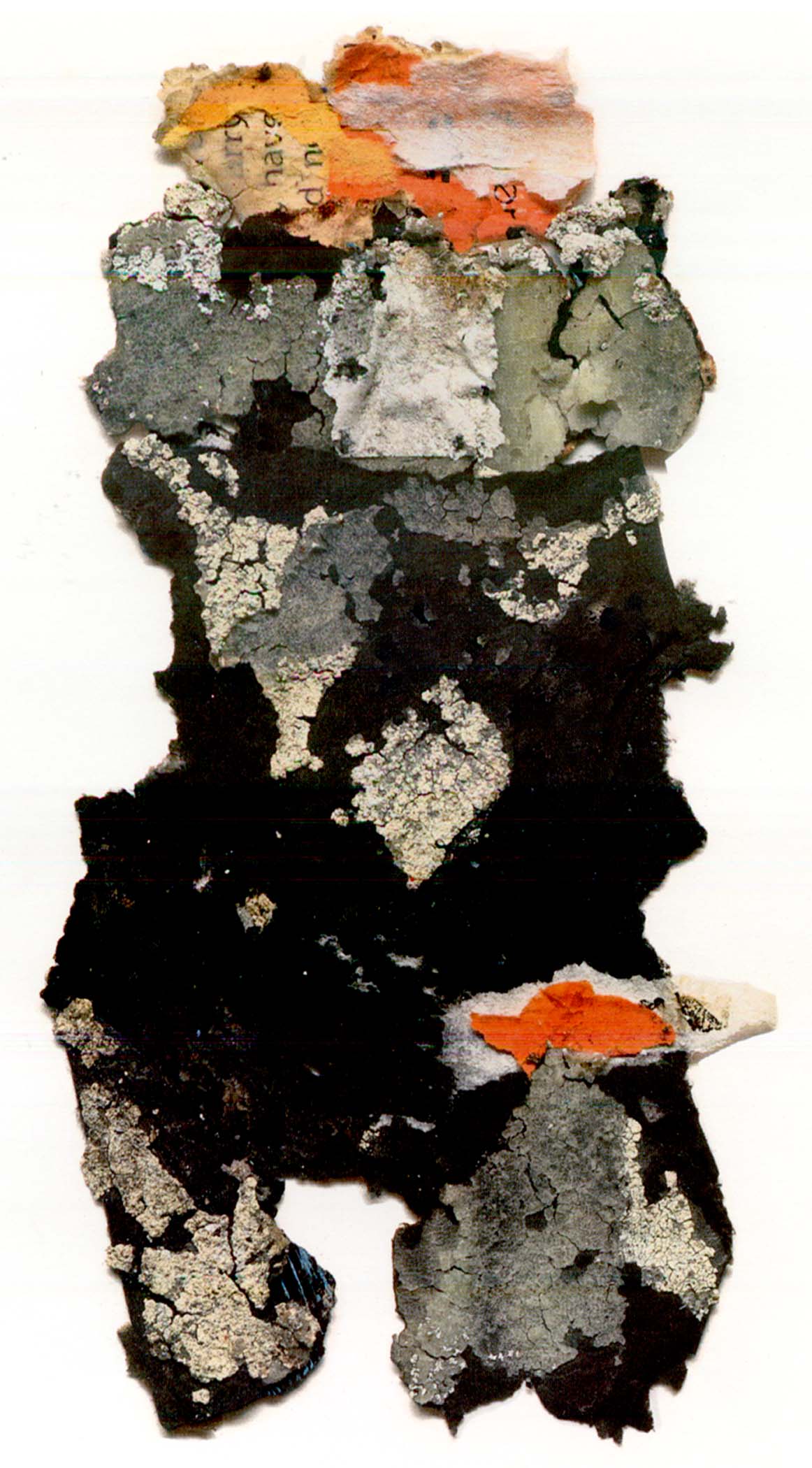Gallery 400, University of Illinois

paper, 7 1/4 x 16 7/8
John Elderfield described the “Merz” colleges of Kurt Schwitters as “miniature epistles of everyday experience.” Irwin Kremen’s works vividly exemplify this same attitude. The artist, a professor of psychology at Duke University, has had no formal art training, but the more than 70 small collages shown here reveal a profound sense of humanity together with astonishing technical skill.
Kremen’s use of worn and torn paper—wall posters, notices, labels, and other gritty detritus of urban life—is also reminiscent of Schwitters, but without the crisp precision of that other artists’s mostly rectangular compositions of cut fragments. Kremen’s work seems to grow outward from its center, assuming a great variety of shapes. Each and every element, no matter how tiny, has been attached to the work by miniature paper hinges. These unseen supports imbue the finished collages with a feeling of extreme fragility and grace. Some works, made of bits of paper that had been exposed to the elements, look like they have been chewed up and spit out. Imix, 1980, is a fluid splash of whitish-great paper wrapped around a melon-colored paper lozenge, which part of a letter from a torn word identifies as the residue of an old advertisement. The gathering of pink, peach, green, and gray green scraps in per se, 1984, is exquisite in its minuscule concentration of tints, and as nagged and lyrical as Helen Frankenthaler’s veiled color fields.
As in Imix, many of Kremen’s collages feature portions of words or letters, although this typographic residue is rarely readable. Made up of overlapping pieces of scavenged poster, i(x0), 1980, features a few large white X’s that form a kind of skeletal structure in-between the mottled black diamonds and bars of the printed surface. One of the most dramatic works shown here, Catch as Catch Can, No. 5, 1986, is an accretion of roughened and nubby paper tatters, covered with lichenous splotches of color. Kremen’s methods of construction I’ve this collage a look both vegetal and airy, as if it were a specimen plucked from some urban arbor.
A separate gallery alcove was devoted to an installation of Kremen’s “re’eh” series, 11 collages constituting a kind of meditation on the Holocaust. These austere and melancholic works are allusively representational: the riflelike black paper strips of …and by Gun, 1983; the railroad car silhouette of Transport, also 1983; or the abraded and illegible text that runs along the top of Broken Words, 1981, like the worn granite of an old tombstone. The surfaces of these collages seem to have been composed of a medium of dust and ashes, yet there is a peacefulness, a simplicity of effect wholly appropriate to the gravity of their shared theme. It is Kremen’s special distinction to have charged his frail materials with poetic resonance equal to the tragic weight of such a subject.